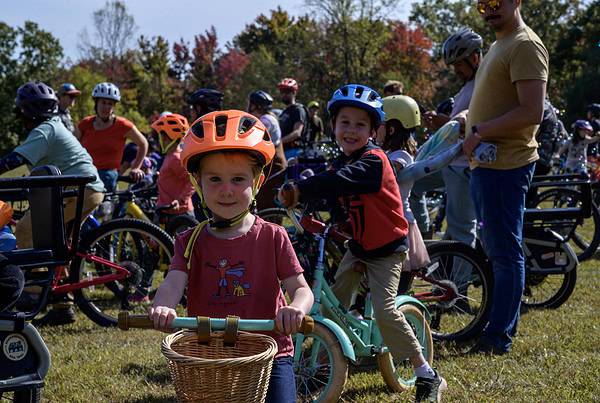The following article appeared in the Harrisonburg’s Daily News Record Paper on Saturday, January 29. It is a decent recap of the Shenandoah Valley’s $100,000 Trail Work project in the North River District of the George Washington National Forest. Needless to say a few of the quotes are not verbatim… However, it gives good press as to the work done to improve the trails in the Forest. While the article does mention hikers on at least one occasion, the Shenandoah Valley Bicycle Coalition wants to emphasize that all the work was on “shared-use” trails and will equally benefit equestrians, hikers, and bike riders. The improvements will also contribute to an overall healthier forest, the improved trails will cause less impact and sediment run-off than before. Below is the DNR story:
|
||
| Valley Coalition Spearheads George Washington Trail Rehabilitation | ||
| By Tim Chapman | ||
|
HARRISONBURG – Rich Edwards’ work as the trail solutions manager for the International Mountain Bicycling Association has taken him all over the country and as far away as Italy. But in 2001, he and his wife settled in Harrisonburg, amazed by the potential of mountain biking in the Shenandoah Valley. Ten years later much of that potential is being realized. Edwards and fellow members of the Shenandoah Valley Bicycle Coalition improved area recreation with the recent completion of $123,000 worth of trail maintenance in the George Washington National Forest. Mountain bikers, hikers, runners and hunters will benefit from the 15 miles of improved trail. “The trails in the national forest, we see them from a health perspective, but also an economic perspective and not just in tourism,” Edwards said. “It’s a benefit to the people living in the Valley. All the trails increase our property values.” Edwards said the SVBC’s trail-maintenance efforts will make it easier for the Valley to compete with Colorado and the Southwest region of the country for avid mountain bikers. “It’s just as good, if not better, outdoor recreation,” he said. To fund the projects in the North River Ranger District of the forest, SVBC applied for a reimbursement grant through the Virginia Department of Conservation and Recreation. The grant money comes from the same gas tax that goes to fund highway improvements. The coalition paid two North Carolina contractors sums of about $30,000 to $40,000 for different stages of the improvements and was then reimbursed by the state, according to Kyle Lawrence, the SVBC advocacy coordinator. Reimbursements came in the form of $98,000 cash and $25,000 based on a DCR volunteer labor scale. Previous grants awarded to the SVBC were all under $2,000. “To be awarded a grant of this magnitude was very exciting and at the same time slightly overwhelming,” said Thomas Jenkins of SVBC. More than 100 local volunteers spent Saturdays brushing trail corridor, installing drainage features and moving trail beds throughout the forest between Va. 250 and U.S. 33. The two North Carolina companies, B4 and Trail Dynamics, did much of the work, which was designed and planned by the SVBC in its grant proposal in 2007. “The biggest goal is to get water off the trail,” Lawrence said. The coalition has been working with the U.S. Forest Service in the North River Ranger District for about 10 years, but usually on minor improvements to trails. “With this project, we’re moving beyond that to actually trying to close some sections of trail that aren’t sustainable and actually relocate them somewhere else,” Lawrence said. “So, kind of revamp the whole thing and not just put Band-Aids.” Lawrence explained that much of the 200 miles worth of trail in the North River Ranger District are fall-line trails and old extraction roads, which predate the park. Fall-line trails go straight up a slope and erode quickly. The trails also are not easily accessible to novice bicyclists. SVBC hopes to have forest trails for all levels of bicyclists and hikers. “We’re working toward creating situations where it’s easier for people to take a 5-year-old out on a bike and still be challenged,” Edwards said. |





